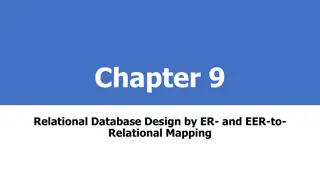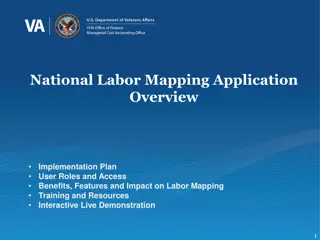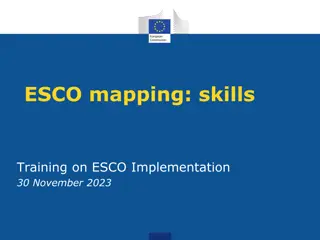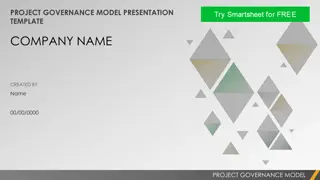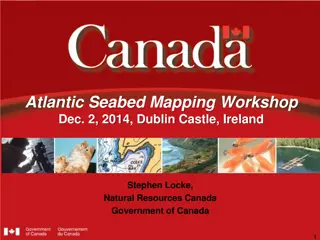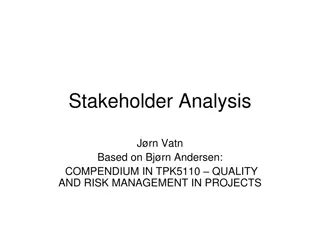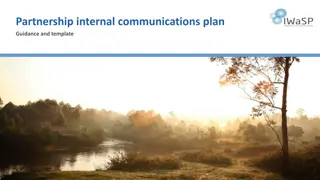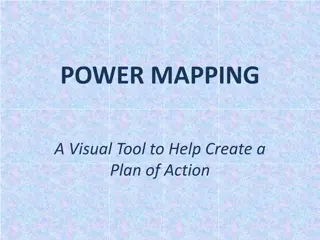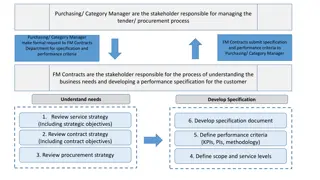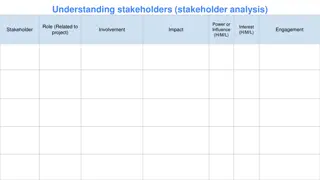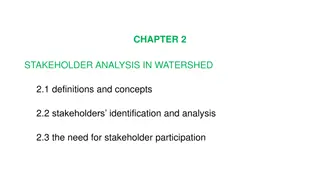Stakeholder Mapping for Effective Communication
Stakeholder mapping is crucial for identifying key stakeholders in a project, managing their expectations, and ensuring effective communication. Learn how to define and categorize stakeholders to tailor communication strategies to their interests, influence, and availability.
Uploaded on Apr 30, 2025 | 1 Views
Download Presentation

Please find below an Image/Link to download the presentation.
The content on the website is provided AS IS for your information and personal use only. It may not be sold, licensed, or shared on other websites without obtaining consent from the author.If you encounter any issues during the download, it is possible that the publisher has removed the file from their server.
You are allowed to download the files provided on this website for personal or commercial use, subject to the condition that they are used lawfully. All files are the property of their respective owners.
The content on the website is provided AS IS for your information and personal use only. It may not be sold, licensed, or shared on other websites without obtaining consent from the author.
E N D
Presentation Transcript
Driving & Releasing Change Template: Stakeholder mapping
Make it essential: stakeholder map Stakeholder mapping is a process of finding out the key stakeholders relating to a project. There are usually many stakeholders, which means many and varied expectations. Using a stakeholder map can help ensure you enable participation and focus communication in a timely way with different stakeholders. 1. Define your stakeholders With your team, write down who the stakeholders are for your project. They could be managers, leaders, members of other teams, services users. Anyone involved directly or indirectly with the process/activity that you are looking at or that has a stake in the outcome of any change that takes place. 2. Categorise your stakeholders Put your stakeholder into the grid, based on your impressions of their interest/availability and their decision-making power. You can use this information to determine how to communicate with each stakeholder. For example, for a stakeholder with significant decision-making power but little availability, it might be best to schedule in regular meetings for feedback. Use Post-its off/online e.g. Miro or Jamboard
Make it essential: stakeholder map Who are your stakeholders Actively engage Keep satisfied Influence Keep informed Monitor Interest / Availability
Make it essential: stakeholder map Contact us Contact us Questions or comments about this resource? Open envelope outline


